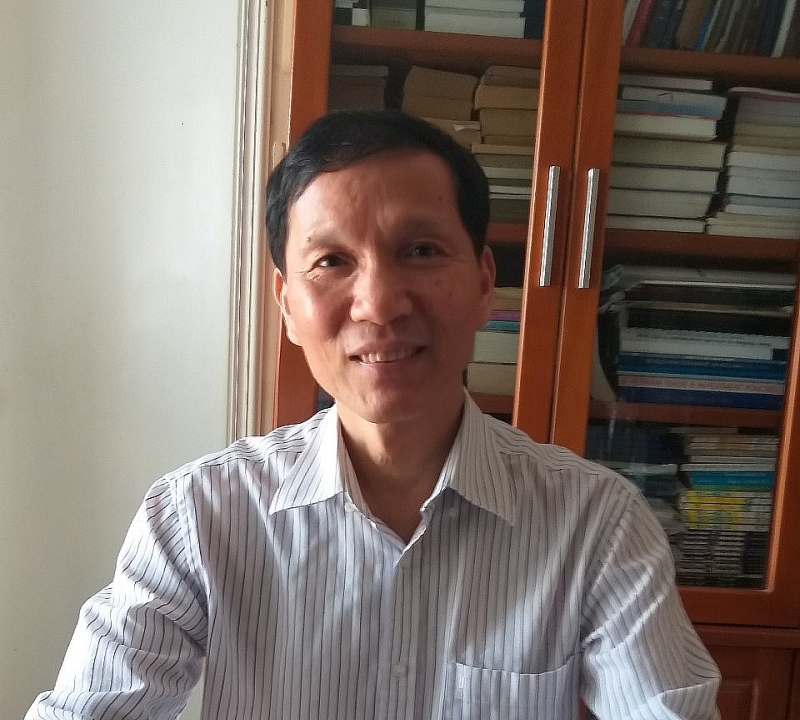VCN – Regarding the issue of promoting the development of border trade infrastructure, economic expert Le Quoc Phuong, former deputy director of the Center for Industry and Trade Information (Ministry of Industry and Trade), said that the State needs capital to create a push to attract investment from the private sector.
 |
| Economist Le Quoc Phuong, former Deputy Director of Industry and Trade Information Center (Ministry of Industry and Trade). |
More than 1.5 years have passed since the Program on developing Vietnam’s border trade infrastructure to 2025, with a vision to 2030 was approved, how do you assess the implementation of this program?
For major programs such as the Vietnam Border Trade Infrastructure Development Program to 2025, with a vision to 2030, the first 1-2 years is usually the start-up time.
The program was approved at a time when the Covid-19 pandemic was the most stressful situation affecting our country. During that time, most localities still fought the pandemic in the old way of isolation and blockades, and the border area was completely closed. In that context, the implementation of the Program to develop Vietnam’s border trade infrastructure to 2025, with a vision to 2030 is only at the beginning.
However, the ministries, branches and localities have also performed some preparatory work such as planning the implementation of the program thoroughly for all levels, branches at the central level as well as a local implementation of the program; selection of investors and contractors; budget allocation for units; site clearance.
These are preparatory works but take a lot of time. Hopefully, with the preparatory work done in the past 1.5 years, ministries, branches and localities have a certain premise that from the end of 2022 onwards, the commercial infrastructure development program of Vietnam’s border to 2025, vision to 2030, will begin to accelerate, achieving the implementation schedule as set out.
Recently, one of the limitations in the development of commercial infrastructure in the border area is that the stage of investment attraction and investment socialization has not achieved the desired results. What is the main reason for this situation?
For socio-economic development and infrastructure; commercial infrastructure in border areas must rely on the private sector, bringing into play the strengths of the private sector. In order to do that, Vietnam’s investment policy must create a favorable and really attractive investment environment with desired incentives for businesses.
So far, this point has not been done well. In addition, investors do not want to invest in border infrastructure because the border localities themselves are not really active in attracting, sometimes they still rely on the support of the Central Government.
What recommendations do you have for state management agencies as well as localities and businesses to improve the efficiency of border trade infrastructure development in the future?
In the development of border trade infrastructure, Vietnam has done many things, but there are still many things that need reform and innovation. There are things that have been set out but have not been implemented well.
In order to strongly promote the development of border trade infrastructure as a premise for the socio-economic development of border localities in the future, the Government needs to pay attention to and allocate funding sources. The government also needs to have policies to further encourage investors from economic sectors other than the state, including private enterprises and foreign enterprises to participate in the investment.
The state needs to create incentives and capital. State capital is not much, but it must create a “push” to attract investment from the private sector to the development of border trade infrastructure through the allocation of a certain amount of capital with disbursement commitments, on time.
In addition, when localities have proposals, the Government as well as ministries and branches need to quickly coordinate to solve problems to help localities create a favorable investment attraction environment.
Localities also need to actively create a really attractive investment environment in addition to the general policy of the State to attract investors. This depends a lot on the specific policy of each locality. Localities must identify the characteristics, make policies suitable to their local characteristics and qualifications and attract investment capital from both state-owned enterprises, private enterprises as well as the FDI sector. The proposed policy should ensure that the locality and investors both benefit.
On the side of enterprises, the enterprises should take advantage of the incentives created by the State, and participate in the implementation of the Program to develop Vietnam’s border trade infrastructure to 2025 with a vision to 2030 to build infrastructure. The commercial layer is increasingly civilized and modern for the border area. This benefits not only the localities, and the country in general, but also the businesses themselves.
By Thanh Nguyễn/Bui Diep
